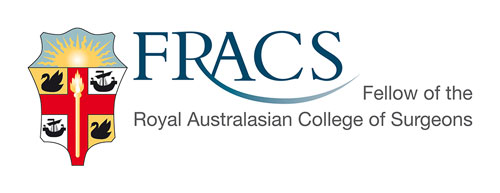EXCISION OF SKIN LESION (including Minor Plastic Surgery)
About the Operation
1. The skin lesion is identified and marked. There is usually no need to shave the hair.
2. Local anaesthetic is injected under and around the lesion (It can sting for a moment when the local anaesthetic is injected in but soon the area will feel numb). The skin is then cleaned with an antiseptic skin solution(eg Cholorhexidine, Betadiene) to reduce the risk of infection.
3. The lesion is cut out with a small margin(usually 2-3 mm, less if for cosmetic reasons, more for proven cancers) of normal-looking skin. This is then sent to the Pathology lab where it will be looked at under the microscope(Note: most labs will bulk-bill if you sign the request slip) - it may take 1 week before the results are back
(No skin is usually removed if a lipoma or cyst is excised)
4. Additional plastic surgical procedures that may be performed at the same time to facilitate closure:
(i) LOCAL FLAP - This is usually done for skin excision around the nose, eye, fingers and lower leg.
(ii)SKIN GRAFT - skin is taken from another area(eg behind the ear, neck, forearm, groin) and secured to the operating(recepient) site
Risks of surgery
Generally, this is a safe procedure - however any surgery does carry some risk.
The risks include: 1. Scarring - most will end up with a small scar. However some people scar easily and may get keloid or hypertrophic scars. 2. Wound infection - sometimes the wound can become red and discharge pus. The sutures may need to be removed or antibiotics may be needed. This may also cause the scar to be bigger. 3. Need for reoperation - sometimes the skin cancer may have spread to the edge of the excision margin(this may be because of microscopic spread). To reduce the risk of recurrence, a wider excision may be neccessary. 4. Skin edges of flap not viable or skin graft not surviving - sometimes the skin that is moved to cover the excised area may not heal fully. This may cause the area to form a scab or open wound that may take slightly longer to heal. 5. Bruising/bleeding - sometimes the wound can bleed a bit or there may be bruising around the wound(especially for cuts around the eye) 6.Wound dehiscence - occassionally, if the wound is in a spot where the skin can be stretched considerable, there is a risk of the wound opening up even after the sutures are removed(eg wounds in the middle of the back) Care must be taken - eg reinforcing dressings may be used to hold the skin on both sides of the wound together. 7. Pain - like any cut, the wound can be painful. There is a small risk of chronic pain and nerve damage to adjacent nerves(esp if the lesion excised deep infiltrating cancer) causing numbness/muscle weakness etc.
Postoperative care and Follow-up
A waterproof dressing is usually placed over the wound except where it is not possible(eg scalp, lesions on parts of the face/ear). It is advisable to leave it on for 7 days.
Removal of sutures - Usually in 5-7 days for wounds in the face/body and 7-14 days for wounds in the back/legs. (Occassionally, dissolvable sutures are used especially if surgery is performed in an operating theatre)
Generally, the wound will feel like any cut of the same size. Once the local anaesthetics wear off in a few hours, there may be some pain. Analgesics is usually not needed.
Contact with water - Generally it is all right to shower with an exposed sutured wound after 24 hours. However it is advisable not to immerse the wound in potentially contaminated water (eg swim in a river/lake) until it is fully healed because of the risk of infection.
It is important to come back to discuss the pathology results either with your surgeon or your GP. If you cannot make it to the planned appointment, please make another appointment (Do not assume that a pathology result is normal if you are not contacted!)
To minimize the scar postop, once the sutures are removed, one can consider using a silicone scar gel or silicone tape on the wound. One should also avoid ultravoilet light(this can cause sunburn on a fresh scar and hyperpigmentation). Applying pressure to hold the scar together(to prevent the scar becoming wider) with a simple tape/Bandaid can help as well. The scar may appear reddish initially, this usually fades with time. Regularly massaging the scar(with moisturizer) can help.
Other non-surgical options
1. Cryotherapy - for skin cancers, solar keratoses, seborrhoeic warts; especially if there are multiple lesions and patient is on warfarin/too frail for surgery
2. Topical treatment with skin cancer creams
Notes on the author : Mr LP Cheah has had long-standing interest in dermatology and surgery on the skin. As a 4th year medical student, he won the Herman Lawrence Prize in Dermatology at the University of Melbourne(this prize is open to medical students from the 4th - 6th year and usually won by students in the 6th/final year who aspires to be Dermatologists). He also did his Advanced Study Unit on Melanoma. During his surgical training, he has also trained under plastic surgeons in Australia and UK and is familiar with plastic surgical techniques for the skin(eg local flaps to close defects in face/nose/lip/leg, skin grafts). A significant portion of his current work involves treating skin lesions/cancers.

